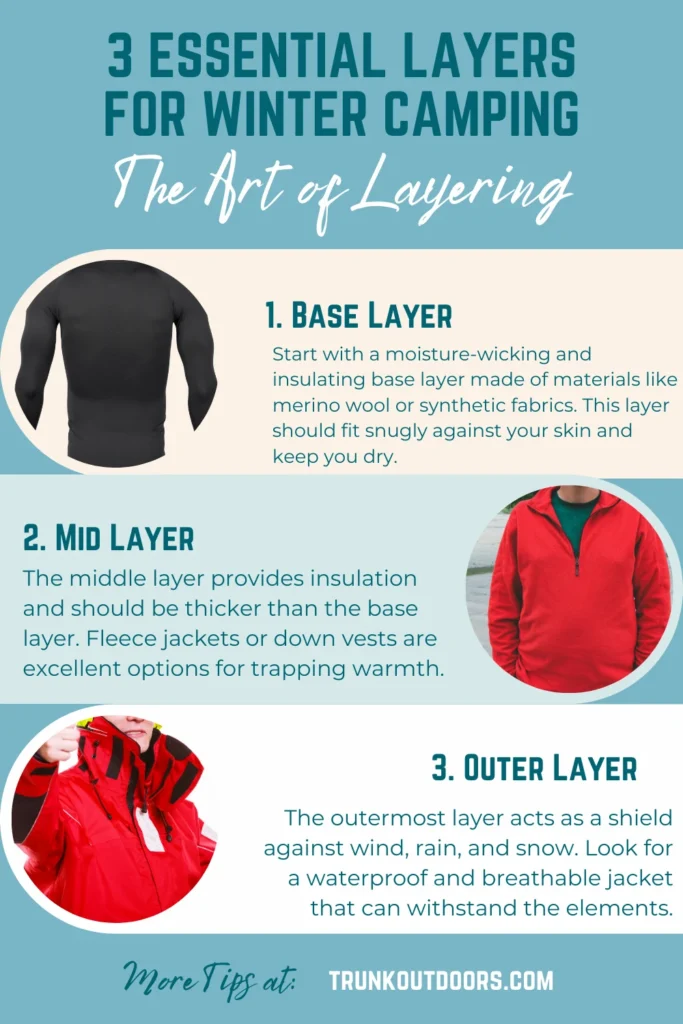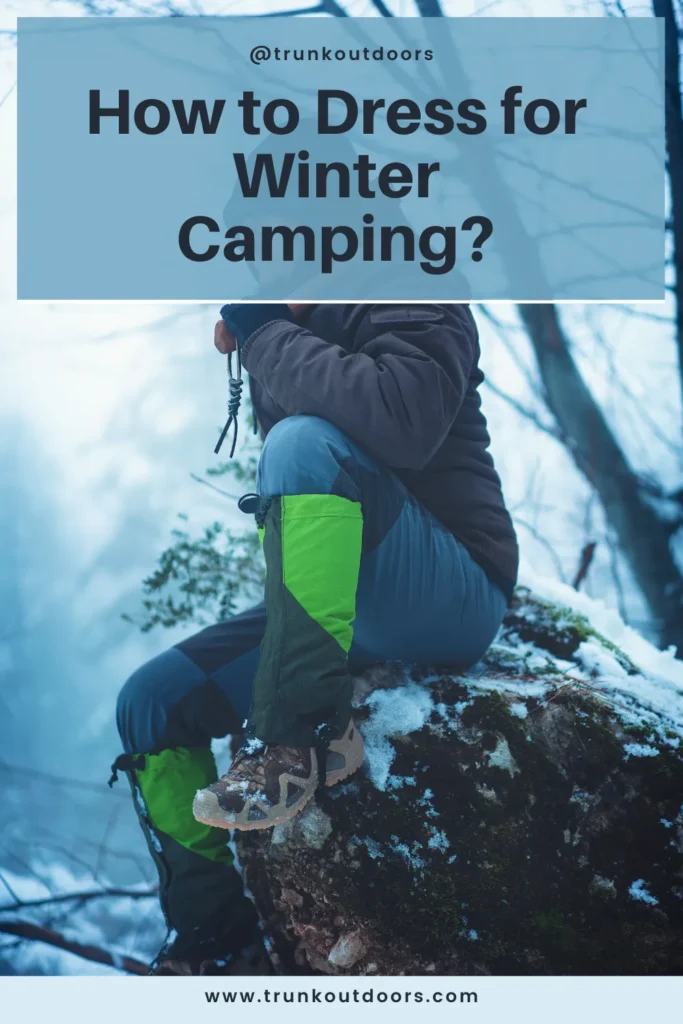How to Dress for Winter Camping?
When winter arrives, some outdoor enthusiasts retreat indoors, while others embrace the season and venture out for thrilling winter camping experiences.
However, winter camping presents its own unique challenges, particularly when it comes to dressing appropriately. Proper clothing is the key to staying warm, comfortable, and safe in freezing temperatures.
In this comprehensive guide, we will explore how to dress for winter camping, covering everything from base layers to outerwear and accessories.
So grab a cup of hot cocoa, sit back, and prepare to learn the secrets of dressing for winter camping like a pro!
Understanding the Weather Conditions
Before embarking on a winter camping trip, it’s important to familiarize yourself with the weather conditions you may encounter.
Winter weather can be unpredictable, and knowing what to expect can help you prepare better. Take into account the temperature variations, wind speed, and precipitation in the area you plan to camp.
Temperature Variations
Winter temperatures can fluctuate significantly during the day and night. It’s crucial to dress in layers to adapt to these changes.
During the day, when you’re active and generating body heat, you may need fewer layers. However, as the sun sets and temperatures drop, you’ll want to add additional layers to keep warm.
Wind and Precipitation
Winter camping often involves dealing with wind and snow.
- Wind can significantly impact the perceived temperature and make it feel much colder.
- Snowfall or rain can make you wet, leading to discomfort and even hypothermia.
Taking wind and precipitation into account when dressing is vital to stay dry and warm.
Read more about How Cold is Too Cold for Camping
Layering for Warmth and Comfort

The art of layering is the key to staying warm and comfortable during winter camping. By using multiple layers, you create an effective insulation system that traps heat, wicks moisture, and allows for easy temperature regulation.
Base Layer: Choosing the Right Fabric
The base layer is the layer closest to your skin and plays a vital role in moisture management.
Choose a base layer made of moisture-wicking fabric such as merino wool or synthetic materials like polyester or nylon. Avoid cotton, as it retains moisture and can leave you feeling cold and damp.
Mid-Layer: Insulating and Trapping Heat
The mid-layer provides insulation and helps retain body heat. Fleece jackets, wool sweaters, or synthetic insulation garments work well as mid-layers.
These materials have excellent insulation properties and retain warmth even when damp.
Outer Layer: Protection from the Elements
The outer layer, also known as the shell layer, protects you from wind, rain, and snow. A waterproof and breathable jacket and pants are essential to keep you dry.
Look for garments made with Gore-Tex or similar materials that offer both water resistance and breathability.
Check out these Tips for Camping in windy conditions
Selecting the Right Fabrics
The choice of fabrics plays a crucial role in keeping you warm during winter camping expeditions. Opt for these tried-and-true options:
- Merino Wool: Merino wool is an excellent base layer material as it is moisture-wicking, odor-resistant, and insulating. It regulates body temperature effectively, keeping you warm even when wet.
- Synthetic Fabrics: Synthetic materials like polyester and nylon are great for mid and outer layers. They offer good insulation, durability, and moisture-wicking properties.
- Down: Down jackets bags are known for their exceptional warmth-to-weight ratio. They provide excellent insulation and are compressible for easy packing.
Protect Your Extremities
Exposure to cold can be particularly harsh on your extremities, such as your head, hands, and feet. Pay attention to these areas and take the following precautions:
Head: Wear a Warm Hat
Always wear a warm hat, such as a knit or fleece beanie, to prevent heat loss from your head. Choose hats made of insulating materials like wool or synthetic fabrics. Avoid tight-fitting ball caps, as they do not provide sufficient warmth.
Hands: Insulated Gloves or Mittens
Protect your hands with insulated gloves or mittens. Look for options that provide warmth and dexterity. Consider wearing thin liner gloves underneath for added insulation and moisture-wicking properties.
Feet: Insulated Boots and Warm Socks
Invest in high-quality insulated boots designed specifically for winter activities. Ensure they are waterproof and have good traction to navigate snowy terrain. Pair your boots with warm, moisture-wicking socks made of merino wool or synthetic materials. Layering socks can provide extra warmth without restricting circulation.
Essential Accessories
In addition to clothing, there are several accessories that can enhance your warmth and safety during winter camping:
- Neck Gaiters and Face Masks: These provide additional protection against the cold and wind. They help retain body heat and protect your face and neck from frostbite and windburn.
- Goggles or Sunglasses: Protect your eyes from snow glare and harmful UV rays by wearing goggles or sunglasses with UV protection.
- Hand and Foot Warmers: These small packets generate heat when exposed to air. They can be placed inside gloves or boots to provide extra warmth for your extremities during extremely cold conditions.
- Headlamp or Flashlight: Essential for navigating in low light conditions during winter camping. Choose a headlamp or flashlight with sufficient brightness and battery life.
- Emergency Whistle: Always carry an emergency whistle to signal for help in case of an emergency or to communicate with your camping group.
Avoid Common Layering Mistakes
To optimize your winter camping outfit, be mindful of these common layering mistakes:
- Wearing Cotton: Avoid cotton clothing as it retains moisture and loses insulation properties when wet. Opt for moisture-wicking and quick-drying materials instead.
- Overdressing: Layering is about finding the right balance between insulation and breathability. Avoid wearing too many layers, as it can lead to excessive sweating and subsequent discomfort.
- Neglecting Ventilation: Proper ventilation is crucial to prevent overheating and moisture buildup. Look for clothing options with adjustable vents to regulate your body temperature.
- Ignoring Extremities: Don’t forget to adequately protect your head, hands, and feet. These areas are more susceptible to the cold. Choose appropriate accessories like hats, gloves, and warm socks.
Read more about solo winter camping tips
Pack Smartly

Efficient packing is essential for winter camping. Consider these tips:
- Lightweight and Compressible Clothing: Choose lightweight and compressible clothing options that are easy to pack and won’t take up too much space in your backpack.
- Emergency and Backup Gear: Pack emergency and backup gear in case of unforeseen circumstances. Include extra layers, spare gloves, hats, and a packable rain poncho.
- Prioritize Staying Dry: Use waterproof stuff sacks or dry bags to keep your clothing and gear dry. Pack moisture-absorbing silica gel packets to prevent dampness inside your backpack.
- Layering for Quick Access: Organize your clothing layers in a way that allows for easy access and quick layering or de-layering as needed during the trip.
Read more about campsite safety tips
Conclusion
By following these tips and guidelines, you’ll be well-prepared to dress appropriately for winter camping. Remember to layer your clothing effectively, choose suitable fabrics, and protect your extremities. With the right clothing and accessories, you can stay warm, comfortable.